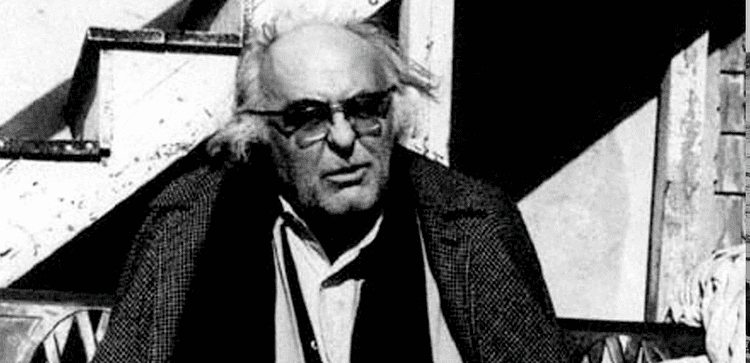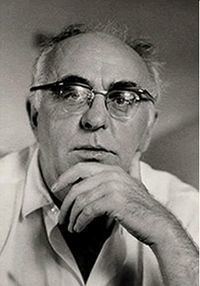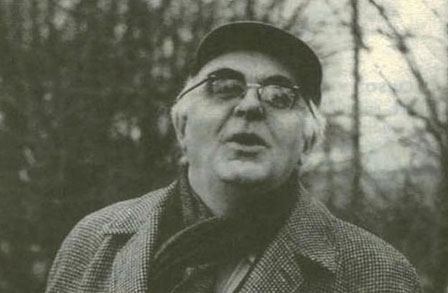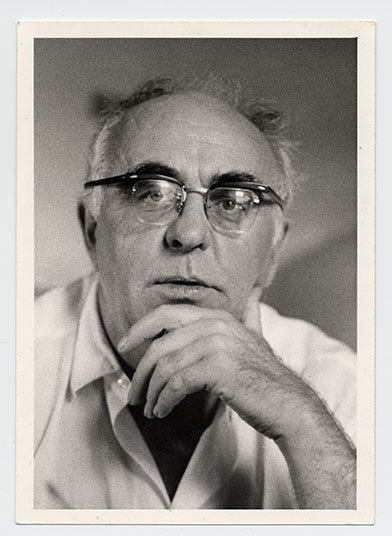Language English Name Charles Olson Nationality American Role Poet | Resting place Gloucester | |
 | ||
Born 27 December 1910Worcester, Massachusetts ( 1910-12-27 ) Notable works The Distances, The Maximus Poems Spouse Constance Wilcock, Betty Kaiser Died January 10, 1970, New York, United States Awards American Book Awards, Guggenheim Fellowship for Humanities, US & Canada Books The Maximus poems, Call me Ishmael, Collected prose, Muthologos, Selected Poems Similar People Robert Creeley, Ralph Maud, Benjamin Friedlander, Robert Bertholf, Sharon Thesen | ||
5 poems by charles olson
Charles Olson (27 December 1910 – 10 January 1970) was a second generation American poet who was a link between earlier figures such as Ezra Pound and William Carlos Williams and the New American poets, which includes the New York School, the Black Mountain School, the Beat poets, and the San Francisco Renaissance. Consequently, many postmodern groups, such as the poets of the language school, include Olson as a primary and precedent figure. He described himself not so much as a poet or writer but as "an archeologist of morning."
Contents
- 5 poems by charles olson
- Charles olson reads maximus to gloucester letter 27 withheld mar 1966
- Life
- Early writings
- The Maximus Poems
- References

Charles olson reads maximus to gloucester letter 27 withheld mar 1966
Life

In 1951, Olson became a visiting professor at Black Mountain College in North Carolina, working and studying here beside artists such as John Cage and Robert Creeley. He subsequently became rector of Black Mountain College and had a second child, Charles Peter Olson, with one of his students, Betty Kaiser. Before his divorce from his first wife finalized, Olson married Kaiser.

Olson's ideas came to deeply influence a generation of poets, including writers such as Denise Levertov, Paul Blackburn, Ed Dorn and Robert Duncan. At 204 cm (6'8"), Olson was described as "a bear of a man", his stature possibly influencing the title of his Maximus work. Olson wrote copious personal letters, and helped and encouraged many young writers. He was fascinated with Mayan writing. Shortly before his death, he examined the possibility that Chinese and Indo-European languages derived from a common source. When Black Mountain College closed in 1956, Olson settled in Gloucester, Massachusetts. He served as a visiting professor at the University at Buffalo (1963-1965) and at the University of Connecticut (1969). The last years of his life were a mixture of extreme isolation and frenzied work. Olson's life was marred by alcoholism, which contributed to his early death from liver cancer. He died in New York in 1970, two weeks past his fifty-ninth birthday, while in the process of completing The Maximus Poems.
Early writings

Olson's first book, Call Me Ishmael (1947), a study of Herman Melville's novel Moby Dick, was a continuation of his M.A. thesis from Wesleyan University.
In Projective Verse (1950), Olson called for a poetic meter based on the poet's breathing and an open construction based on sound and the linking of perceptions rather than syntax and logic. He favored metre not based on syllable, stress, foot or line but using only the unit of the breath. In this respect Olson was foreshadowed by Ralph Waldo Emerson's poetic theory on breath. The presentation of the poem on the page was for him central to the work becoming at once fully aural and fully visual The poem "The Kingfishers" is an application of the manifesto. It was first published in 1949 and collected in his first book of poetry, In Cold Hell, in Thicket (1953).
Olson's second collection, The Distances, was published in 1960. Olson served as rector of the Black Mountain College from 1951 to 1956. During this period, the college supported work by John Cage, Robert Creeley, Allen Ginsberg, Robert Duncan, Fielding Dawson, Cy Twombly, Jonathan Williams, Ed Dorn, Stan Brakhage and many other members of the 1950s American avant garde. Olson is listed as an influence on artists including Carolee Schneemann and James Tenney.
Olson's reputation rests in the main on his complex, sometimes difficult poems such as "The Kingfishers", "In Cold Hell, in Thicket", and The Maximus Poems, work that tends to explore social, historical, and political concerns. His shorter verse, poems such as "Only The Red Fox, Only The Crow", "Other Than", "An Ode on Nativity", "Love", and "The Ring Of" are more immediately accessible and manifest a sincere, original, emotionally powerful voice. "Letter 27 [withheld]" from The Maximus Poems weds Olson's lyric, historic, and aesthetic concerns. Olson coined the term postmodern in a letter of August 1951 to his friend and fellow poet, Robert Creeley.
The Maximus Poems
In 1950, inspired by the example of Pound's Cantos (though Olson denied any direct relation between the two epics), Olson began writing The Maximus Poems. An exploration of American history in the broadest sense, Maximus is also an epic of place, Massachusetts and specifically the city of Gloucester where Olson had settled. Dogtown, the wild, rock-strewn centre of Cape Ann, next to Gloucester, is an important place in The Maximus Poems. (Olson used to write outside on a tree stump in Dogtown.) The whole work is also mediated through the voice of Maximus, based partly on Maximus of Tyre, an itinerant Greek philosopher, and partly on Olson himself. The last of the three volumes imagines an ideal Gloucester in which communal values have replaced commercial ones. When Olson knew he was dying of cancer, he instructed his literary executor Charles Boer and others to organise and produce the final book in the sequence following Olson's death.
